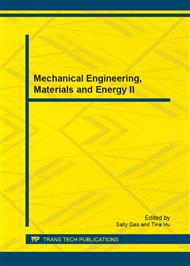p.299
p.304
p.308
p.312
p.319
p.324
p.329
p.335
p.343
Design and Experiment of Fatigue Testing Apparatus Driven by Piezoelectric Bimorph
Abstract:
To get fatigue property of the small and hard brittle components working under conditions of little amplitude and high frequency force, a novel kind of high frequency fatigue testing apparatus driven by the piezoelectric bimorph has been proposed. Firstly, the working principle of the high frequency fatigue testing apparatus driven by piezoelectric bimorph is analyzed, and the simulation is made by the Finite Element Method software. Then a prototype is designed and produced. Finally, the maximum load on the sample is measured by the test. The results indicate that the maximum load on the sample is 65.3 N-150.7 N when changing the AC voltage amplitude (80 V-240 V), thickness of the elastic loader (28 mm-42 mm) and the thickness of the plate spring (0.9 mm-1.5 mm). The prototype made in this paper is suitable for the tensile and fatigue testing with the load level mentioned above under the condition of little amplitude and high frequency force
Info:
Periodical:
Pages:
319-323
Citation:
Online since:
January 2013
Authors:
Price:
Сopyright:
© 2013 Trans Tech Publications Ltd. All Rights Reserved
Share:
Citation:


